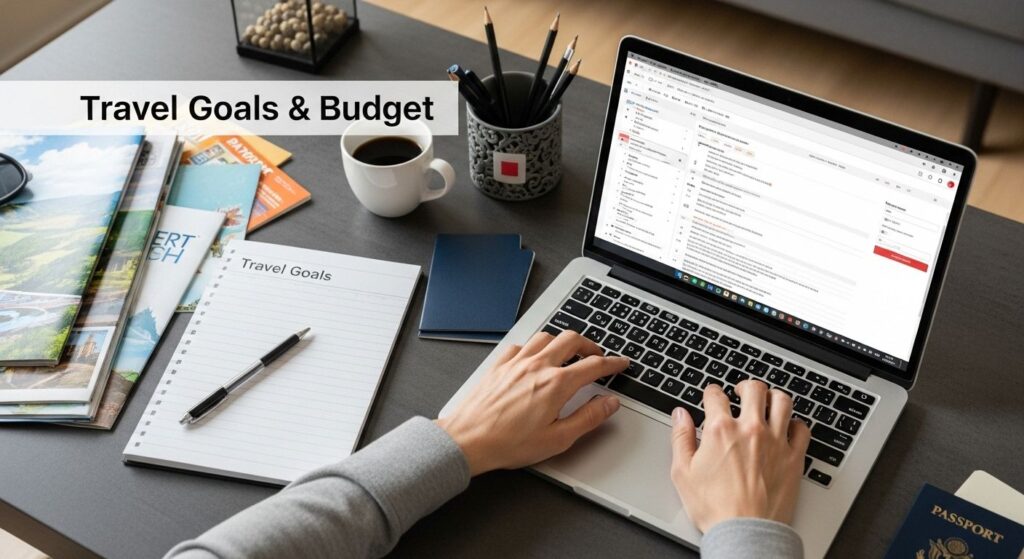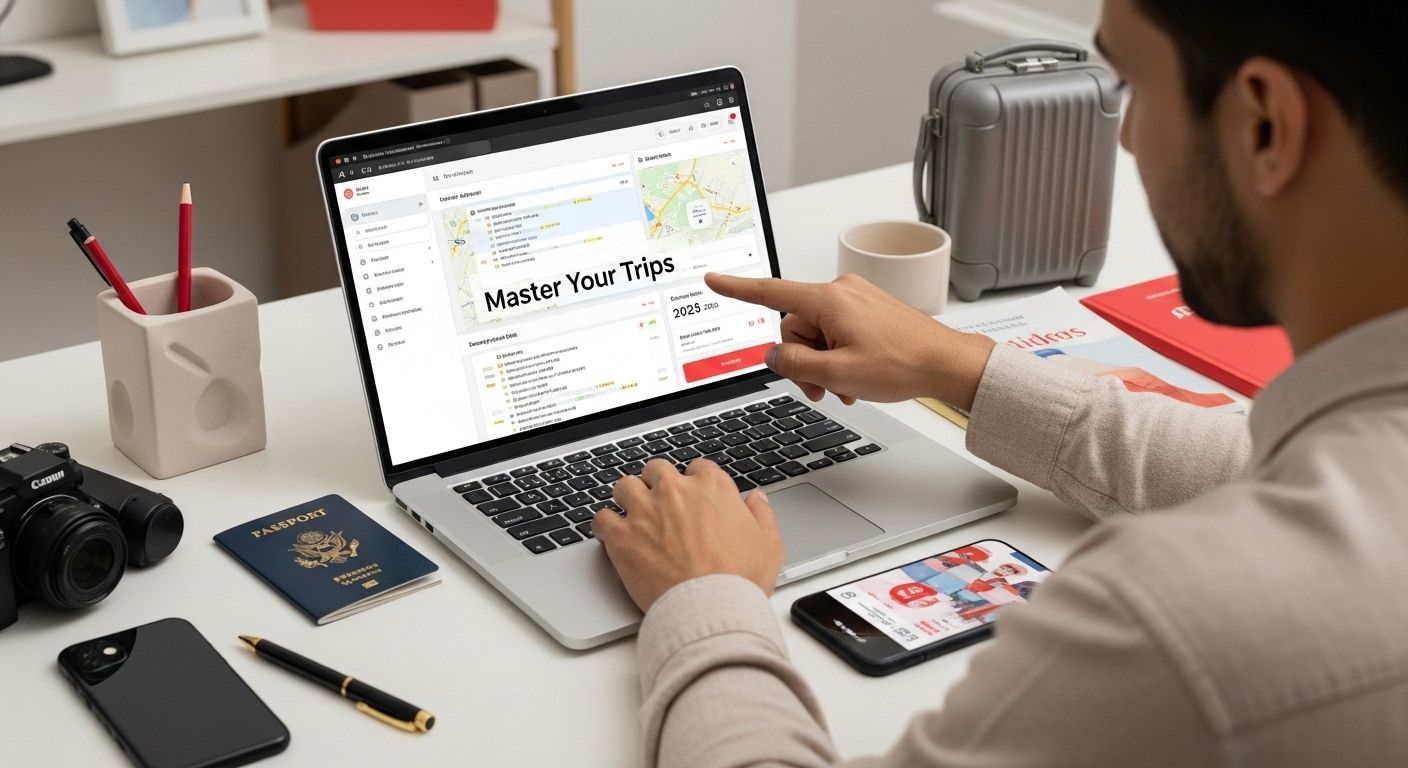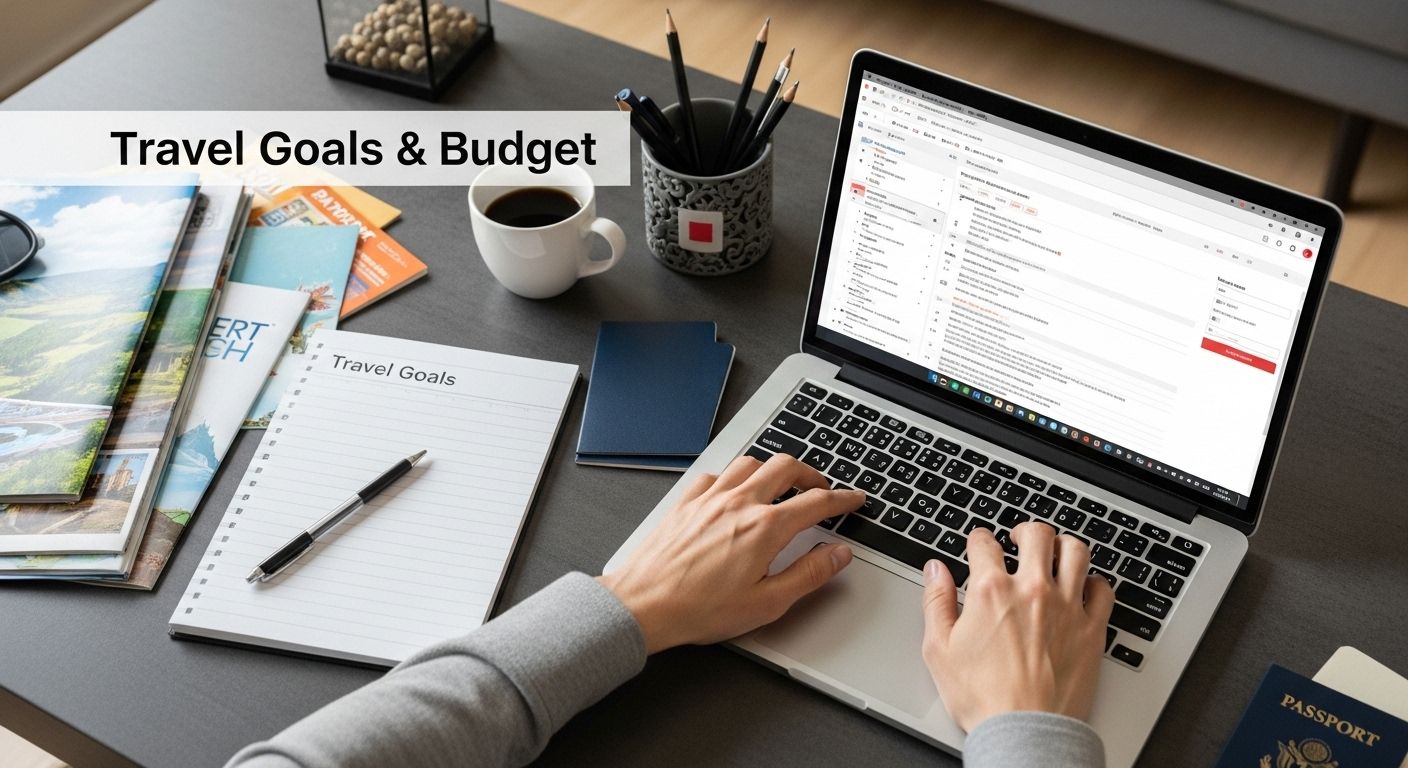Planning a trip sounds simple until the details pile up. Turns out, more than 60 percent of travelers admit they feel overwhelmed by organizing transportation, accommodation, and daily activities. Most people think checking off a packing list is enough yet they miss how the smallest planning mistakes can turn a dream vacation into a stressful scramble.
Table of Contents
- Step 1: Define Your Travel Goals And Budget
- Step 2: Research Your Destinations And Activities
- Step 3: Create A Detailed Itinerary
- Step 4: Book Accommodations And Transportation
- Step 5: Prepare For Travel With Packing And Documentation
- Step 6: Review Your Plans And Make Adjustments
Quick Summary
| Key Point | Explanation |
|---|---|
| 1. Define clear travel goals | Understanding your travel motivations ensures effective planning and budget management for your trip. |
| 2. Create a realistic budget | Allocate specific percentages for transportation, accommodations, and expenses, allowing for flexibility during your travels. |
| 3. Research destinations thoroughly | Utilize various sources to learn about cultural aspects, local costs, and seasonal factors to enhance your travel experience. |
| 4. Develop a detailed itinerary | Organize activities by priority and allow flexibility to manage time and energy efficiently during your travels. |
| 5. Prepare documentation and packing | Gather essential travel documents and pack strategically to minimize stress and ensure a smooth journey. |
Step 1: Define Your Travel Goals and Budget
Successful travel planning begins with crystal clear goals and a realistic budget. Before diving into complex itineraries or booking flights, understanding what you want from your trip and how much you can spend sets the foundation for an incredible journey. Travel goals aren’t just destinations they’re experiences, feelings, and personal objectives that transform a simple trip into a meaningful adventure.
Starting your travel planning requires honest self reflection about your travel motivations. Are you seeking relaxation, cultural immersion, adventure, professional networking, or family connection? Each goal dramatically influences your budget and planning strategy. A weekend beach getaway demands different preparation compared to a month long international expedition. Consider your primary trip objectives carefully identifying whether you want pure leisure, skill building, personal growth, or a combination of experiences.
Budget creation demands precision and realistic expectations. According to Practical Money Skills, establishing a dedicated travel fund helps manage expenses effectively. Begin by calculating total available funds and then allocate percentages for different trip components. Typical budget breakdowns often look like:
- Transportation (25-35% of total budget)
- Accommodations (20-30%)
- Food and dining (15-20%)
- Activities and entertainment (10-15%)
- Emergency and miscellaneous expenses (10%)
Research destination costs thoroughly understanding local price ranges for accommodations, meals, and activities. Some travelers prefer budget friendly options while others prioritize unique experiences over cost savings. Flexibility in your budget allows unexpected opportunities without financial stress.
If you want more insights on coordinating group travel expenses and goals, check out our detailed group trip planning guide. Remember that a well defined travel goal paired with a thoughtful budget transforms travel from a distant dream into an achievable reality. Your next step involves translating these initial plans into a comprehensive travel strategy.
Step 2: Research Your Destinations and Activities
Researching destinations and activities transforms a generic trip into a personalized adventure tailored to your unique interests and preferences. This critical step bridges your initial travel goals with actionable planning, turning abstract dreams into concrete experiences.
Effective destination research goes far beyond simply choosing a location it involves understanding the cultural landscape, seasonal variations, and hidden opportunities that make travel truly memorable.
Begin your research by diving deep into potential destinations through multiple information channels. Travel blogs, tourism websites, social media platforms, and traveler forums offer rich insights beyond traditional guidebooks. Look for first hand experiences that reveal authentic local perspectives rather than relying solely on promotional materials. Pay attention to seasonal considerations like weather patterns, local festivals, peak tourist seasons, and potential travel restrictions that might impact your journey. Some destinations offer dramatically different experiences depending on the time of year, so timing can significantly influence your travel satisfaction.
Activity selection requires a strategic approach blending personal interests with destination specific opportunities. Create a comprehensive list of experiences you want to enjoy categorizing them by priority and feasibility. Research local tour operators, understand activity costs, and check participant reviews for credibility. Important verification steps include confirming activity availability, checking age or fitness requirements, and understanding cancellation policies.
According to the U.S. Department of State, travelers should also review official travel advisories and understand local entry requirements before finalizing plans. This includes checking passport validity, visa requirements, and potential health recommendations for your destination.
If you are planning a complex itinerary with multiple activities, our comprehensive guide to creating travel itineraries can provide additional insights into organizing your research effectively. The goal is to create a flexible yet well informed travel plan that balances structured activities with spontaneous exploration, ensuring your trip meets both your expectations and budget constraints.
Step 3: Create a Detailed Itinerary
Creating a detailed itinerary transforms scattered travel ideas into a structured, actionable plan that maximizes your journey’s potential. An exceptional itinerary is more than a schedule it’s a personalized roadmap that balances planned activities with flexible exploration. This critical step bridges your research and actual travel experience, ensuring you make the most of every moment without overwhelming yourself with rigid expectations.
Start by organizing your selected destinations and activities chronologically, considering realistic travel times between locations. Factor in buffer periods for unexpected delays, rest, and spontaneous discoveries. Digital tools and apps can significantly streamline this process, allowing you to visualize your route and allocate time efficiently. Consider creating a color coded spreadsheet or using digital mapping tools that track your daily movements, estimated travel times, and activity durations. Pay special attention to transportation logistics, understanding how you will move between destinations and accounting for potential transit challenges.
Prioritize your activities by creating a hierarchical structure that distinguishes between must do experiences and optional attractions. Flexible planning means knowing which activities are non negotiable and which can be easily substituted or skipped if time or energy becomes limited. This approach prevents travel burnout and allows for organic, unplanned experiences that often become trip highlights. Consider time of day, energy levels, and logical geographic proximity when arranging your activities to minimize unnecessary travel and maximize enjoyment.
Learn more about crafting the perfect travel blueprint to understand advanced itinerary creation techniques. According to the U.S. Department of State, travelers should also maintain digital and physical copies of their detailed itinerary, sharing key information with trusted contacts for safety purposes.
To verify your itinerary’s effectiveness, ask yourself these critical questions: Does this plan align with my original travel goals? Have I allowed sufficient time between activities? Am I balancing structured experiences with potential spontaneity? A well crafted itinerary should feel exciting yet manageable, promising adventure without inducing stress.
Step 4: Book Accommodations and Transportation
Booking accommodations and transportation represents the pivotal moment where your travel plans transition from conceptual to concrete. This step transforms your carefully crafted itinerary into a tangible journey, requiring strategic decision making and attention to critical details. The goal is not just securing a place to sleep and means of travel, but finding options that enhance your overall travel experience while maintaining budgetary constraints.
Begin your booking process by cross referencing your detailed itinerary with transportation and accommodation options. Prioritize locations that minimize travel time between planned activities and offer convenient access to your primary destinations. Consider alternative transportation methods beyond traditional flights, such as trains, buses, or rental vehicles, which might provide more flexibility and potentially lower costs. When evaluating transportation, calculate total travel times, potential layovers, and connection logistics to ensure smooth transitions between destinations.
Accommodation selection demands a nuanced approach balancing comfort, location, and budget. Read multiple reviews from different platforms to gain comprehensive insights into potential lodging options. Look beyond star ratings and examine specific traveler comments about cleanliness, safety, noise levels, and proximity to your planned activities. Consider your personal travel style some travelers prioritize budget friendly hostels, while others seek boutique hotels or vacation rentals that offer unique local experiences. Booking platforms with flexible cancellation policies provide an additional layer of security, allowing you to adjust plans if unexpected changes occur.
According to the U.S. General Services Administration, travelers should maintain detailed records of all bookings, including confirmation numbers, contact information, and reservation details. Explore our comprehensive guide to travel savings to discover strategies for reducing transportation and accommodation expenses.
To verify the success of this step, confirm you have: secured all necessary transportation between destinations, booked accommodations aligned with your itinerary, obtained relevant confirmation documents, and created a backup plan for potential booking complications. A well executed booking process sets the foundation for a smooth, enjoyable travel experience.
The following table compares different types of accommodations and transportation options referenced in the article. Use it to weigh your choices based on comfort, cost, and flexibility.
| Option Type | Examples | Key Features |
|---|---|---|
| Accommodations | Hostels, Hotels, Vacation Rentals | Vary in comfort, location, price, cancellation policies |
| Transportation | Flights, Trains, Buses, Rental Cars | Differ in flexibility, transit time, and total cost |
Step 5: Prepare for Travel with Packing and Documentation
Preparing for travel involves a strategic approach to packing and organizing critical documentation that ensures smooth, stress free travel experiences. Effective preparation transforms potential travel chaos into a well orchestrated journey, reducing anxiety and minimizing unexpected complications. This step is about creating a comprehensive travel readiness strategy that covers everything from essential documents to smart packing techniques.
Documentation preparation requires meticulous attention to detail. Gather and organize all necessary travel documents well in advance, creating both digital and physical copies. This includes passports, identification, travel insurance information, emergency contact details, and any required visas or health certificates. Consider using a dedicated travel folder or digital storage system that allows quick access to important information. Scan critical documents and store them securely in cloud storage, ensuring you have backup access even if physical copies are lost. Important tip: Keep digital and physical copies in separate locations to provide a safety net in case of unexpected loss.
Packing strategically goes beyond simply throwing clothes into a suitcase. Develop a systematic approach that considers your specific destination, planned activities, and transportation methods. Select versatile clothing items that can be mixed and matched, reducing overall luggage volume. Consider the climate, cultural norms, and specific activity requirements when choosing your wardrobe. Pack essential medications, including copies of prescriptions, and include a compact first aid kit tailored to your destination. Electronics should be carefully protected with appropriate cases and accompanied by universal adapters compatible with your destination’s electrical systems.
According to the U.S. Department of State, travelers should pay special attention to documentation and preparedness. Check out our comprehensive vacation planning checklist for additional insights into travel preparation.
To verify successful completion of this step, confirm you have: created secure document backups, packed adaptable clothing and essential items, prepared medical and emergency supplies, and organized both digital and physical travel resources. A well prepared traveler is a confident traveler, ready to embrace new adventures with minimal stress.
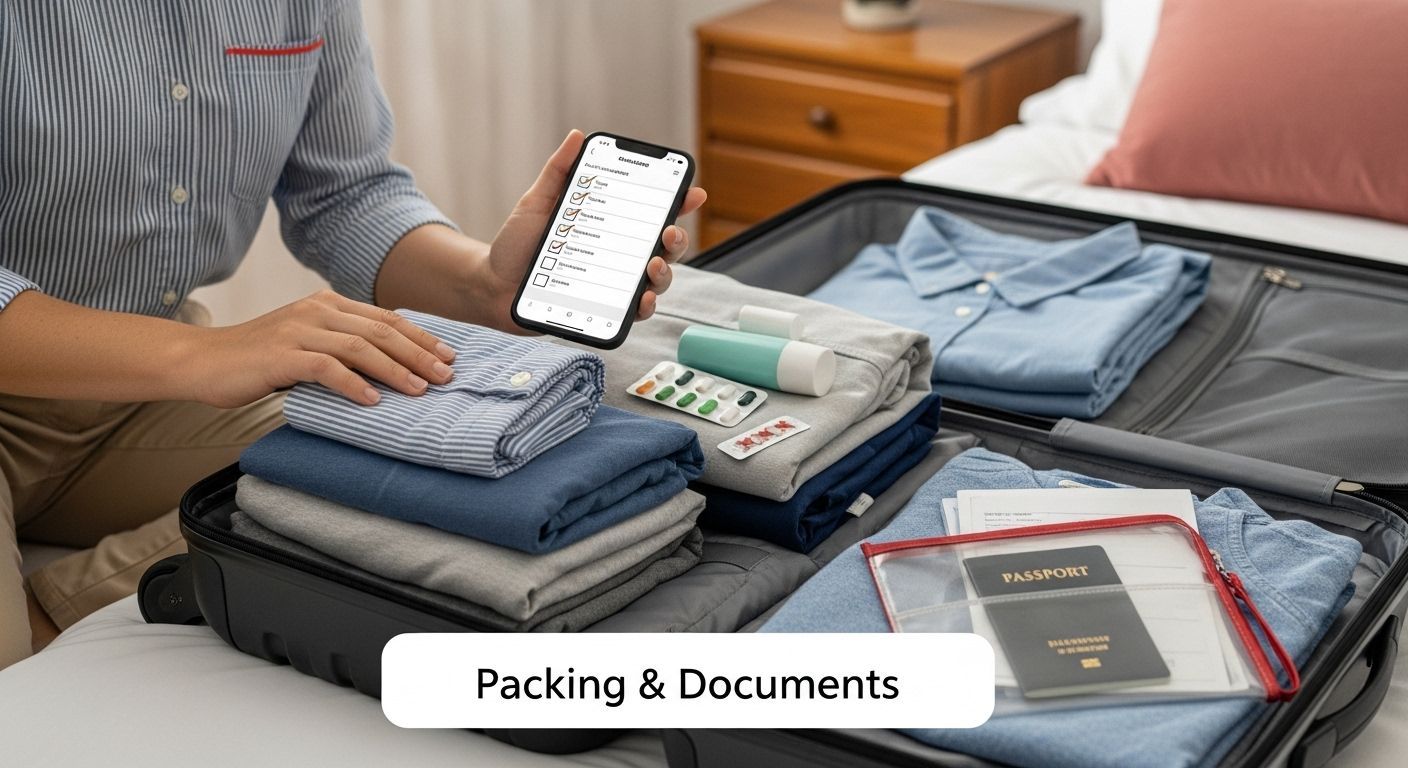
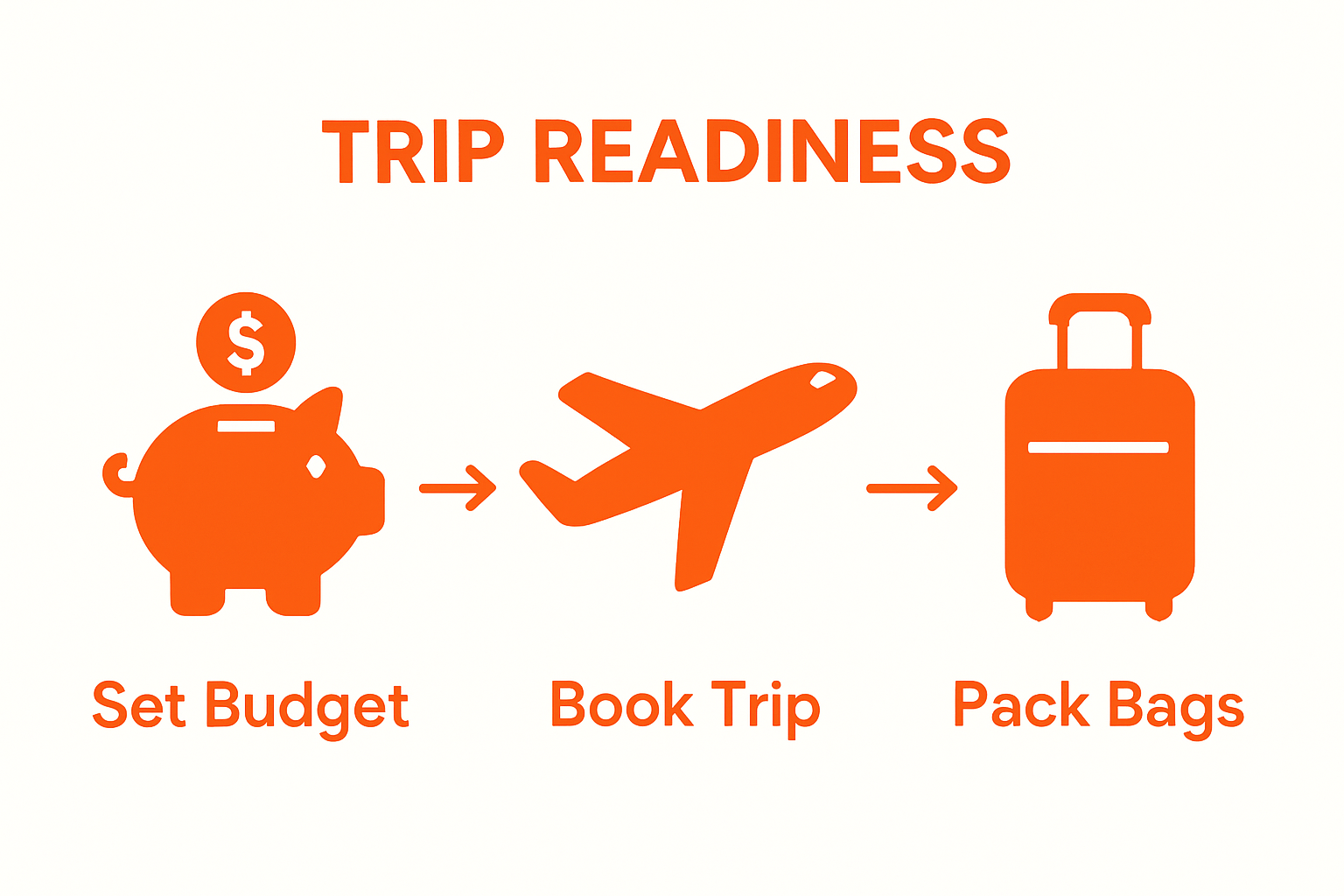
Step 6: Review Your Plans and Make Adjustments
Reviewing and adjusting your travel plans represents the final critical checkpoint before embarking on your journey. This step transforms theoretical planning into a resilient, adaptable travel strategy that can withstand unexpected challenges and opportunities. The goal is not perfection, but flexibility and preparedness that allows you to navigate potential disruptions with confidence and ease.
Begin your comprehensive review by systematically examining every aspect of your travel plan. Compare your original travel goals with the current itinerary, ensuring you have not drifted from your initial vision. Scrutinize transportation connections, accommodation bookings, and activity schedules for potential timing conflicts or logistical challenges. Consider external factors like seasonal weather patterns, local events, or recent destination updates that might impact your travel experience. Realistic travelers understand that no plan survives completely intact, so building in contingency options becomes crucial.
Technology offers powerful tools for plan refinement and tracking. Use digital platforms that allow real time updates and provide centralized information management. Consider creating digital copies of all travel documents, storing them in secure cloud storage accessible from multiple devices. Communicate your refined plans with trusted contacts, sharing key details about your itinerary and emergency contact information. Proactive communication and flexible planning are your best defenses against potential travel disruptions. Evaluate each segment of your trip with a critical eye, asking yourself whether the current plan maximizes your potential for enjoyment while minimizing unnecessary stress.
According to the U.S. Department of State, travelers should continuously monitor their destination’s current conditions and be prepared to adjust plans accordingly. Explore our comprehensive travel organization strategies to further refine your approach.
To verify successful plan review, confirm you have: double checked all reservations, created backup transportation options, noted potential alternative activities, prepared digital and physical document backups, and communicated key travel details with emergency contacts. A well reviewed travel plan is not rigid it is a living document ready to adapt to your adventure’s unique rhythm.
Here is a summary checklist to help you verify each stage of your trip planning process is complete. Use this table to ensure nothing is overlooked before your journey begins.
| Step | Verification Checklist Item |
|---|---|
| Define Goals & Budget | Goals clearly identified; realistic budget allocated |
| Research Destinations/Activities | Activities prioritized and verified; entry requirements checked |
| Create Itinerary | Itinerary aligns with goals; buffer time included; copies made |
| Book Accommodations/Transportation | All bookings confirmed; backup plans in place |
| Prepare Packing & Documentation | Digital/physical copies of all documents; essentials packed |
| Review & Make Adjustments | Plans double-checked; contingency options noted; contacts informed |
Ready to Transform Your Trip Planning Experience?
After reading how complex trip preparation can be, you might recognize the stress and overwhelm that creep in when juggling spreadsheets, scattered notes, and countless booking tabs. The article “Plan My Trip: A Step-by-Step Guide for Travelers” highlights real pain points—uncertain budgets, scattered documents, time-consuming research, and the challenge of building an itinerary that balances structure with flexibility.
With Yopki, you can leave behind the hassle and confusion. Our platform addresses every stage of your planning process:
- Instantly generate a personalized itinerary curated around your unique travel goals.
- Visually organize your journey on an interactive map, so every location fits seamlessly into your day.
- Upload all your documents and confirmations to one secure hub for peace of mind.
- Adjust plans effortlessly using drag-and-drop tools if something changes along the way.
- Access AI-powered travel support and an optional booking service when you want stress-free reservations.
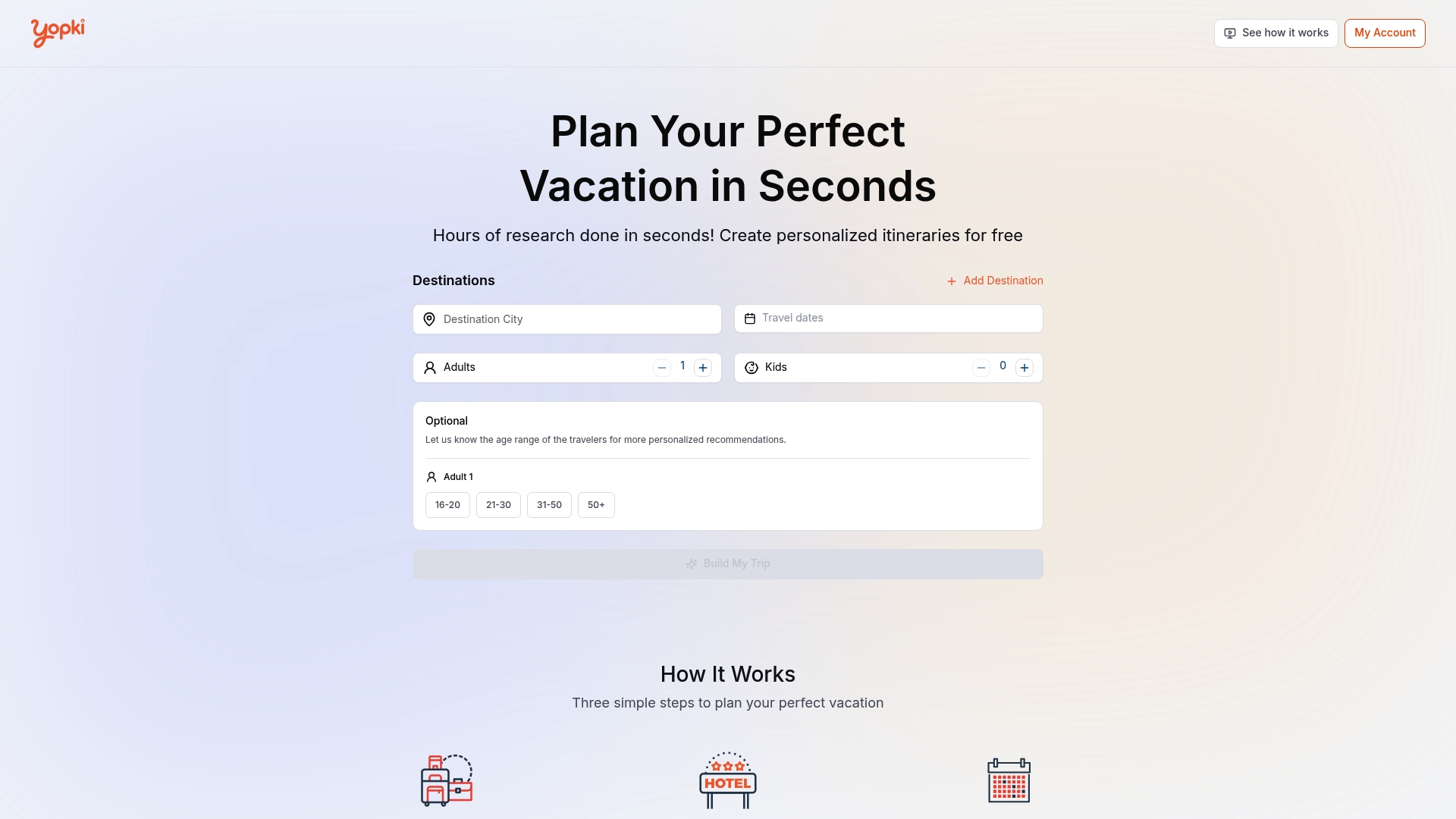
Ready to experience smarter, faster, and more enjoyable travel planning? Visit Yopki’s website now and see how easy it is to turn the steps from this guide into your most memorable adventure yet. Discover why so many travelers are choosing Yopki for trips that are organized, flexible, and truly unforgettable. Start planning today and enjoy complete confidence before you ever leave home.
Frequently Asked Questions
What should I consider when defining my travel goals?
When defining your travel goals, consider what type of experiences you want to have, such as relaxation, cultural immersion, adventure, or personal growth. Understanding your motivations will help you plan more effectively.
How do I create a realistic travel budget?
To create a realistic travel budget, establish a dedicated travel fund and allocate percentages for transportation, accommodations, food, activities, and emergency expenses. Research destination costs to inform your budget estimates.
What resources can I use to research destinations and activities?
You can research destinations and activities using travel blogs, tourism websites, social media platforms, and traveler forums. Look for authentic reviews and insights to better understand what to expect in your chosen destination.
How can I effectively pack for my trip?
To pack effectively, create a systematic packing list considering your destination, planned activities, and climate. Choose versatile clothing, pack essential medications, and organize critical documentation to ensure a smooth travel experience.
